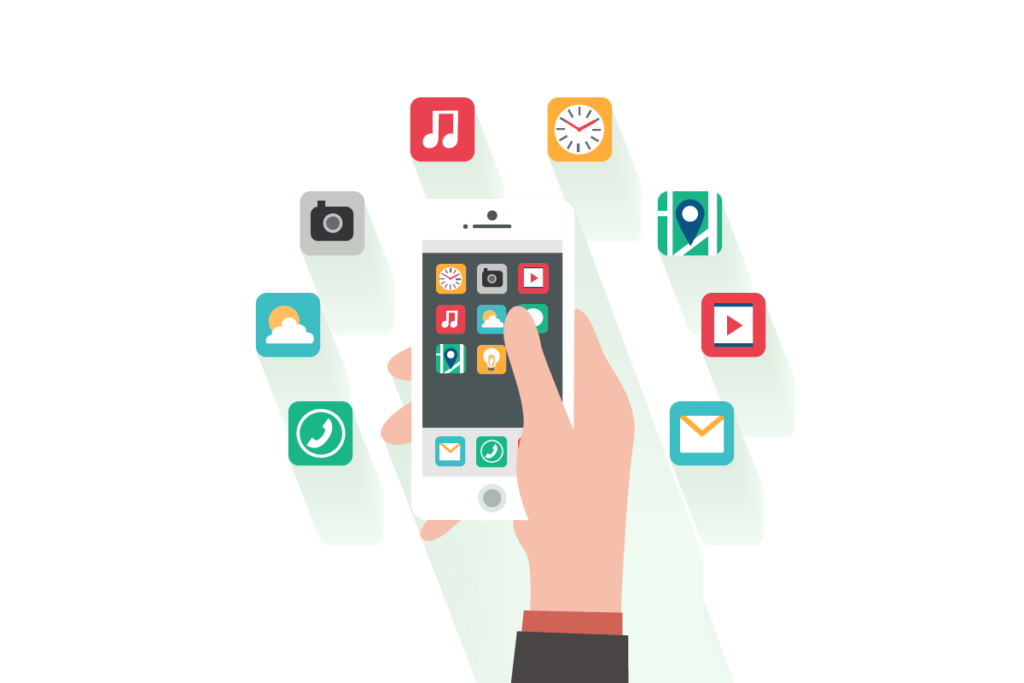The mobile application service providers are a team of professional IT enthusiasts with diverse proficiency in choosing the perfect technology combination, which best meets the clients’ requirements. The mobile app development industry in the country is alive and busy with service providers catering to all kinds of businesses big and small and reaching out to clients all over the globe.
CHOOSE MOBILE APPLICATION DEVELOPMENT AUSTRALIA
The services of mobile app developers Australia include developing applications for iOS, Android mobile application development, Windows phone Australian Mobile App development and a whole lot more. Australia is a rapidly growing destination for application development, with more than 10,000 mobile app development companies as well as 140,000 and more mobile app developers. It’s ranked third in the world for having a huge base of both iOS and Android developers. Australia is indeed one of the fastest growing mobile application development country in the world.
These days, nine out of ten businesses intend to boost productivity and lower costs by using mobile devices and technology. Most organizations plan to use or are considering using mobile technology over the next three years. Majority of businesses are planning to implement mobile business intelligence or BI and mobile business analytics in the next few years. In 2016, there was an ongoing battle between Android and iOS, the growing popularity of hybrid apps, the rise of the citizen developer initiative and numerous attempts to fight mobile application insecurities. Australian app developers are always on the lookout for mobile trends that could change the way business and services are done.
Trends in mobile application development
1. IOT-related applications dominate. Towards the end of this year, there would be 6.4 connected gadgets all throughout the world. The IoT or the Internet of Things is shaping mobile application future trends because almost every solution requires a dedicated app that enable users to manage smart devices. While creating software that is IoT related is not that different from what developers have been doing for some time, most IoT solutions are by default innovative and often need integration with third-party or niche services and devices.
2. Enterprise mobile applications go hybrid and micro. Millennials officially have become the biggest generation in the US workforce. They use 3-4 devices in the workplace, value flexibility and believe existing enterprise software, such as ERPs and CRMs and other solutions supposed to improve productivity in fact slows down the performance of employees. As more organizations take enterprise solutions to tablets, smart phones and even wearables, the demand for mobile developers will surpass the available capacity by 500 percent. Utilizing no-code and low-code development tools, such as for instance the Citizen Developer Initiative, would be one of the hottest trends in mobile application development.
3. Messengers evolve continuously. The Messengers evolution was one of the biggest factors behind the mobile development trends in 2016. Messengers and AI chatbots will be the trend of their own this year. Businesses look for new ways to reach out to the target audience. While users spend more than 85 percent of their mobile time in applications, only 5 apps, including social media and messengers see heavy use. Although high-quality mobile applications still help companies boost brand visibility, it gets easier to interact with customers via WhatsApp, WeChat and of course Facebook Messenger.
4. Android-first is happening finally. There was a list of various reasons why iOS-first was still among the future trends in mobile app development, citing Android fragmentation and the 90 percent revenue gap between Google Play and the App Store as the main arguments for testing the waters with iOS app. Android finally may take over as the platform is now the priority of 47 percent of professional developers. The reason why is first, there is a growing tendency to create mobile apps that drive brand awareness as well as customer loyalty, than the direct monetization, which still is a thing on the App Store. Second, it is the new emerging markets, like China, Latin America and India that’s dominate by Android, which saw an 18.4 percent growth in smart phone sales recently, compared to only 8.2 percent for mature markets. Finally, it’s the evolution of the ecosystem of Android.
5. UX would marry accessibility. More than 18 mi8llion citizens in the US were born with some kind of disability or acquired one later in life. 54 percent of them use a smart phone. It is a big and hugely underdeveloped market, because few vendors create software with accessibility in mind. Thanks to the Internet of Things, the situation would change for the better. Medial alarms, home automation system and communication solutions similar to SignGlvoes open up new opportunities for disabled persons and minimize barriers to independent living.
READ ALSO: Compare the Tim Super adsl fiber rates and find the best internet connection for your business
